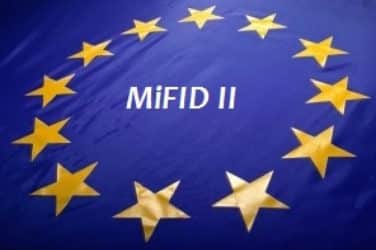For U.S. Firms, Becoming “MiFID II Friendly” Starts with Getting an LEI
by Gary Stone, market structure and regulatory policy strategist at Bloomberg

Gary Stone, Bloomberg
MiFID II does not place direct obligations on U.S. buy- or sell-side firms. However, because it touches nearly every aspect of their E.U. customers’ investment workflow, MiFID II will indirectly affect U.S. firms in ways traders, operations and compliance managers may not realize. MiFID II is much more than just responding to the E.U.’s new research and inducement rules.
U.S. firms that do not understand MiFID II and its new standards of transparency may place themselves at a competitive disadvantage. In addition, firms that do not help their E.U. customers with MiFID II may risk losing their business.
In many cases, the first step for U.S. firms to become “MiFID II Friendly” involves obtaining an LEI, or Legal Entity Identification number. The LEI is a unique 20-character, alpha-numeric ID based on the global ISO 17442 standard developed by the International Organization for Standardization (ISO). Each unique ID is associated with a single legal entity. Similar to the way people have a passport or national insurance ID in the E.U., firms are identified by the legal entity identifier. The LEI became the E.U.’s standard customer/counterparty identifier under the European Markets Infrastructure Regulation (EMIR) derivatives reform. The LEI concept has subsequently become hardwired into E.U. legislation, including MIFID II and the Market Abuse Regulation (MAR). The code is how E.U. firms are required to identify their E.U. and non-E.U. relationships in their regulatory reports.
ESMA’s guidance on LEIs is clear: E.U. firms’ counterparties are required to have an LEI before they can start transacting with each other.[1] As a result, the LEI has become part of the E.U.’s new Know Your Customer (KYC) and on-boarding process.
If you’re a U.S. sell side firm that executes E.U. customer orders in U.S. financial assets, or a buy side firm that invests in E.U. financial instruments or has E.U. investors, then there are three things that you can do to improve your competitive position by helping your E.U. relationships become MiFID II compliant:
- Obtain an LEI through an accredited issuer
- Ask your E.U. counterparties, “How is MiFID II changing your business?”
- Implement answers to the question, “Besides getting an LEI, what else do you need me to do so you can comply with MiFID II?”
For the last year or more, E.U. firms have been extremely focused on MiFID II compliance related to their relationships within the E. U. Most of the discussions about the extraterritorial effect of the directive have focused on research, compliance and management. MiFID II places more than a dozen other new obligations on E.U.-investment firms related to order management, best execution, trade surveillance and reporting, just to name a few. We will explore these new obligations in a series of blogs to follow.
With the 3 January 2018 implementation date rapidly approaching, U.S. firms should strike up a conversation with their E.U. relationships about how they can be more MiFID II friendly now.
[1] HSBC’s Chris Johnson, in his op-ed, summarized ESMA’s guidance simply as, “No LEI; No Trade.”




